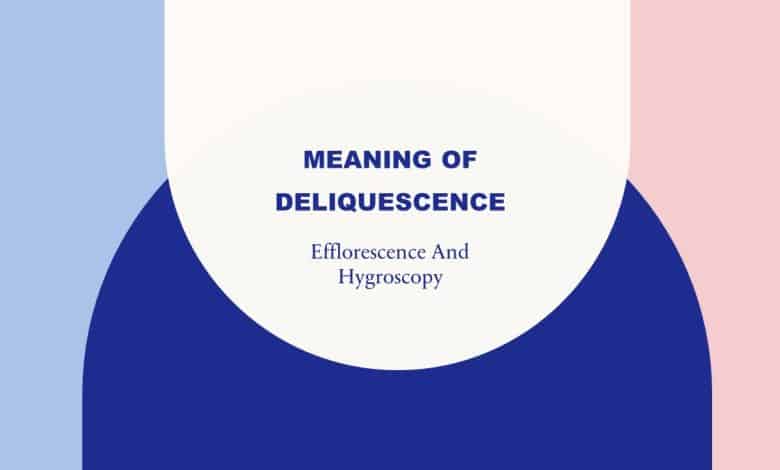Meaning of Deliquescence, Efflorescence and Hygroscopic Substances with Examples

When certain compounds are exposed to air, they either lose their water of crystallization or they absorb moisture from their surroundings. The terms efflorescent, deliquescent, and hygroscopic are used to describe such compounds.
Get the following substances: pellets of sodium hydroxide, washing soda crystals (from an airtight container), quicklime and concentrated tetraoxosulphate(VI) acid. Place small amounts of each substance on a watch glass and note their appearances carefully. Leave the substances in the open air for some time. Then note any changes in their appearances.
Meaning of Deliquescence and Examples
Some compounds tend to absorb a large amount of water on exposure to the atmosphere so that they eventually turn into solutions. This phenomenon is known as deliquescence and the substance are said to be deliquescent.
Examples of these substances are sodium hydroxide, iron (III) chloride, potassium hydroxide, calcium chloride, magnesium chloride, and phosphorus (V) oxide.
Read: Balancing chemical equations with examples
What is Efflorescence Substance and Examples
Some crystalline salts will lose part or all of their water of crystallization when they are exposed to the atmosphere to form a lower dehydrate or anhydrous salt. This is known as efflorescence and the salt is said to be efflorescent.
An example is the washing soda molecule which loses nine out of its ten molecules of water of crystallization when exposed to the atmosphere.
Na2CO3.10H2O -> Na2CO3.H20 (s) + 9H20 (g)
Meaning of Hygroscopy
Hygroscopic substances also absorb moisture on exposure to the atmosphere. If they are solids, they will not form solutions but merely become sticky or moist. A hygroscopic liquid like concentrated tetraoxosulphate(VI) acid will absorb water from the air, usually diluting itself up to about three times its original volume. Hygroscopic substances are commonly employed as drying agents in the laboratory.
Other examples of hygroscopic substances are sodium trioxonitrate(V), copper(II) oxide, and quicklime.
